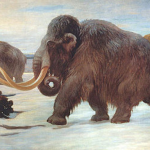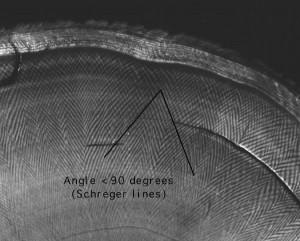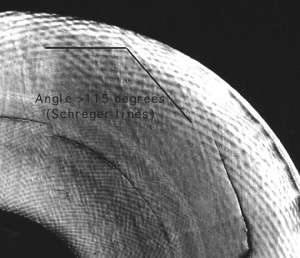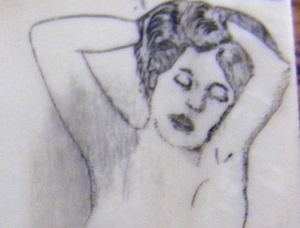 Are there alternatives to elephant ivory? Elephant ivory has been used for centuries for everything from religious carvings to musical instrument parts such as saddles, bow tips, piano key tops, enhancements and adornments on bagpipes to inlay on many many instruments. Ivory has also been used for netsukes (a button like toggle on japanese garments), jewelry and more.
Are there alternatives to elephant ivory? Elephant ivory has been used for centuries for everything from religious carvings to musical instrument parts such as saddles, bow tips, piano key tops, enhancements and adornments on bagpipes to inlay on many many instruments. Ivory has also been used for netsukes (a button like toggle on japanese garments), jewelry and more.
With the dwindling population of elephants in the world and their tusks still sought after, sanctions have been set in place since 1975 and are now being strictly enforced.
Scrimshaw had started during the whaling era as a way to pass the time for the sailors. The same treaties (called the CITES treaties) made it illegal to buy, sell or trade in whale teeth, though they eased the treaties in over a five year period, giving artists and antique dealers time to get their affairs in order, allowing the fish and wildlife branch of the U.S. Government to issue certificates to those who had obtained the ivory legally up to that point.
That was then, this is now. Elephant ivory as well as whale ivory is illegal to buy and sell, and the laws appear to be getting more stringent. So what is a scrimshaw artist, carver, knifemaker to do? Fortunately, there are alternatives. The first alternative is from the long extinct mammoth, which we will be going into in depth here.
Mammoth ivory is the material the tusks of long extinct ancestors of the elephants are made of. Mammoths became extinct roughly four thousand years ago, due to climate change and other factors historians and scientists are still debating. Their skeletons and tusks have been found in abundance in the frost heaves in Canada and Alaska and throughout Siberia and eastern Europe, and as far south as Nebraska and Hyde Park, New York.
Mammoth ivory that is unearthed varies in color from brown to blue to creamy white. Some tusks are found intact while most are broken into smaller pieces, though they are still sizeable.
Mammoth tusk chunks are carefully dried and cut into the outer bark (often brown)and inner ivory (often white, though depending on the minerals in the soil the color can permeate quite deep).
Mammoth ivory developed slightly differently from the modern elephant as evidenced by the Schreger lines that form during their creation.
Angles of less than 90 degrees indicate that it’s mammoth/mastodon, angles greater than 120 degrees show that it’s elephant.

Mammoth Ivory

CITES.org has an extensive pdf on the identification of different ivories at http://www.cites.org/sites/default/files/eng/resources/pub/E-Ivory-guide.pdf
At this moment, mammoth ivory is legal. In 2014 the state government of New York introduced legislation that would also make mammoth ivory illegal to buy or sell in that state if it passes (see http://legiscan.com/NY/votes/A08824/2013 http://legiscan.com/NY/bill/S07040/2013). So far (as of 5/12/2014) no action has been taken on this bill.
Other than the Schreger lines and the weathering there is little difference between mammoth ivory and elephant ivory. The color can actually be the same and is no indication of the origin as stated earlier.
Ivory can be cut and shaped with any tool that will cut wood or bone. Scroll saws and band saws (with a 1/2” wide 6-10 teeth per inch works best according to Boone Trading). Heat can ruin the ivory, so when cutting and sanding be sure it stays cool enough to touch. Burnishing too hard can also introduce minor fractures in the face of the ivory (I know from sad experience). This occurred to me when I was working a piece the way I had first learned – covering the ivory completely with a liberal amount of ink and letting it dry completely, then using a piece of cardboard folded over twice to rub away the ink that was on the polished surface. You can do this once or twice, but I had done this five or six times. Now I use a brush pen laying the ink down sparingly, and then only two or three times.
When it comes to scrimshaw, many scrimshanders use a variety of tools from steel points to x-acto knives to carbide tipped scribes to gravers. I had learned using a “Waller Graver” which had a point cut from a rectangular piece of carbide. Since then I have moved to steel point tools or my favorite, the Coulter precision scribe, located on Etsy.com at http://www.etsy.com/listing/27464510/scrimy-tool-516-diameter?ref=listing-shop-header-0
The favorite pigments for scrimshaw are still India ink and oil paint, each having their benefits and drawbacks. India ink dries fast and comes off the polished surface easily, the drawback is the fast drying time. Oil paint goes on smooth and you can wipe it right off the polished surface, but you have to wait up to two weeks or more for it to dry completely.
Mammoth ivory comes in thicknesses from a couple of millimeters up to whole cross sections. According to David Warther you should coat the end grain of anything beyond 3/8” with several coats of superglue to prevent cracking. He has extensive tips for working with ivory at his site.
To protect the ivory surface, the best polish I’ve found is Renaissance Wax, available from Amazon.com. Here you have to be certain your pigment is completely dry too, let it sit for a couple of days if you are using India ink and at least two weeks if you are using oil paint otherwise you may wipe away your work! Renaissance wax also works well with fine wood such as turnings. A little bit goes a long way.
There are several places on the net you can purchase mammoth ivory. One of my favorites is BooneTrading.com. One of my other favorites, milesofalaska.net has since stopped providing this service, and I wish him the best of luck in his endeavors – he’s a true character and has authored several books about his adventures in Alaska.
Mammoth ivory can be an excellent medium for scrimshaw. It’s legal (currently), it doesn’t harm any animals, there is a good though obviously finite supply, and it scribes and carves like most ivory.
Do you have any questions about mammoth ivory or scrimshaw? We’ll be glad to help you, and if we can’t we’ll more than likely be able to point you in the right direction.
Our next article will be on a man-made material known as “Alternative Ivory”. It is a cast polyester that looks and scribes almost like ivory, but… well, we’ll get into it more in the next article. We’re currently cutting some and will have pics and possibly some video, too.

I have a collection of mammoth mastadon walrus and whale scrimshaw of which most were purchased 40 years ago in alaska. Two of these Mammoth pieces are about 18 inches by 4 inches in diameter.They are fully scrimshawed. Iam getting my estate in order for my family and would like to have an estimate of value for possible sale.
Hi Tim,
as an artist I wouldn’t be able to assess your items. There is however, a group on FB called The Scrimshaw Collectors Guild (https://www.facebook.com/groups/scrimshawcollectorsguild/) may be able to help you.
I’m looking for a j.holland scrimshaw artist, have a piece of his it’s apicture of a Spanish galleon on a prehistoric mastodon. Would like to see some of his art and no some of his history
Hi Larry, and thanks for writing! I’m not familiar with J.Holland, though you might be able to find other collectors who have some of their works at The Scrimshaw Collector’s Guild” (https://www.facebook.com/groups/scrimshawcollectorsguild/). They’re a group of avid collectors and very knowledgable.
If I use India ink on mammoth ivory, should I apply linseed afterwards to help preserve it?
Hi Leanne, and thanks for writing. I’ve not used linseed oil, but there is a product called “Renaissance Wax” that I have used on wood, ivory, bone, etc. Also known as archival wax, you can find it on Amazon
So far I’ve been practicing scrimshaw on bone but soon I am hoping to get some mammoth ivory. I know boonetrading sells some but do you know of other places that might have it as well?
Hi Elisha,
Glad to see the interest in this artform – I always find it relaxing as well as challenging. I’ve seen some mammoth ivory for sale on https://www.facebook.com/groups/scrimshawcollectorsguild/ once in awhile. Note that depending on where you live, it may be illegal to sell or purchase (NY, NJ, HI, IL, CA). Be sure to check your local laws before you purchase anything.
Need to ask specific questions about differentiating mastodon ivory key tops from elephant ivory key tops in an antique Steinway piano
Hi Jennifer, and thanks for writing! It’s an interesting question. I think I would first find the serial number of your piano and contact Steinway and Sons to see if they have information on your specific piano. If any of the keys were re-ivoried, there may be mammoth or mastdodon ivory used, depending on what was available. Due to the cut of the ivory, the Schreger lines may not be apparent on many/any of the 51 white keys. If you are selling the piano, having it’s provenence would be benificial, not only to tell when it was made, but also what it was made of. You may contact them through their website https://steinway.com (One Steinway Place, Astoria, NY 11105 – (718) 721-2600)